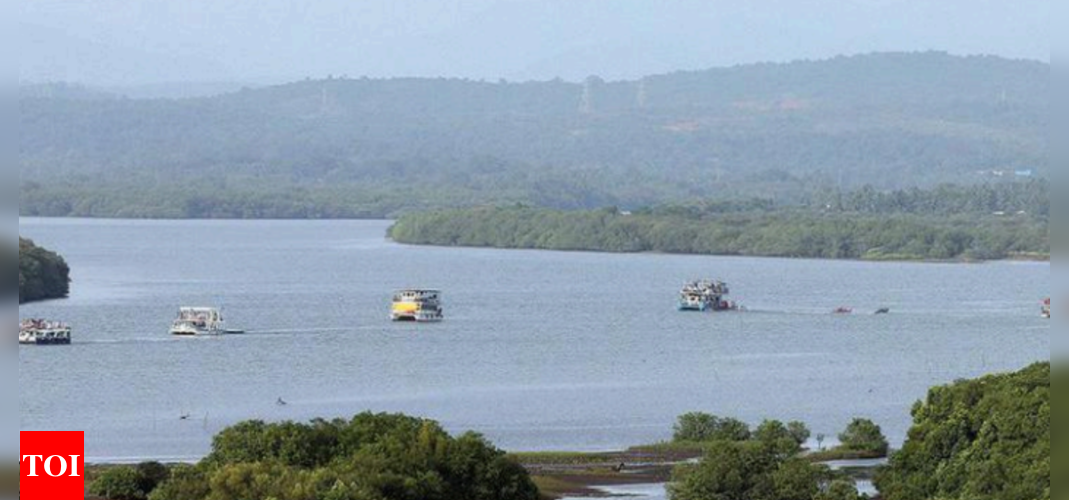PANAJI: A study by the CSIR-National Institute of Oceanography (NIO) in the Mandovi and Zuari rivers revealed a stark decline in microplastic (MP) concentrations post-Covid 19 pandemic, showcasing a significant reduction across both dry and wet seasons. This decline highlighted a notable shift in MP size distribution, with larger MPs dominating after the pandemic compared to smaller ones prevalent earlier.
“The present study clearly exhibited that due to the reduction of overall anthropogenic activities during the Covid-19 pandemic period, a sharp decline of plastic waste and MP abundance in the coastal water body in Goa,” the research paper said.
As the was a dramatic downturn in the production, consumption and disposal of plastics, researchers seized a rare opportunity to scrutinise the pandemic’s impact on microplastics in the Mandovi and Zuari, the principal waterways of Goa.
NIO researchers meticulously examined surface water and sediment samples both pre and post the pandemic period, encompassing the dry and wet seasons.
The findings revealed that post-pandemic, MP concentrations plummeted to levels two to seven times lower than those observed before the pandemic, regardless of the dry or wet seasons. A notable shift in the size distribution of MPs emerged, with larger MPs (>300millimicron) dominating the post-pandemic landscape compared to the pre-pandemic era, where smaller MPs (<300millimicron) prevailed.
Further analysis unearthed a shift in dominant polymer types. Polyamide (PA), polyvinyl alcohol (PVAL), and polyvinyl chloride (PVC) took precedence after the pandemic, supplanting polyacetylene, polyacrylamide (PAM), and polyvinyl pyrrolidone (PVP) observed in earlier samples.
Equally significant was the risk assessment of MPs in sediments, where the Polymer Load Index indicated higher levels before the pandemic. Simultaneously, water quality parameters painted a promising picture, signifying an improvement in water quality during the pandemic’s tenure, the scientists said.
The pandemic inadvertently offered a momentary respite to Goa’s two main water bodies, unveiling the profound impact of human activities on plastic pollution.
“The present study clearly exhibited that due to the reduction of overall anthropogenic activities during the Covid-19 pandemic period, a sharp decline of plastic waste and MP abundance in the coastal water body in Goa, west coast of India was found,” NIO scientists said.
“The present study clearly exhibited that due to the reduction of overall anthropogenic activities during the Covid-19 pandemic period, a sharp decline of plastic waste and MP abundance in the coastal water body in Goa,” the research paper said.
As the was a dramatic downturn in the production, consumption and disposal of plastics, researchers seized a rare opportunity to scrutinise the pandemic’s impact on microplastics in the Mandovi and Zuari, the principal waterways of Goa.
NIO researchers meticulously examined surface water and sediment samples both pre and post the pandemic period, encompassing the dry and wet seasons.
The findings revealed that post-pandemic, MP concentrations plummeted to levels two to seven times lower than those observed before the pandemic, regardless of the dry or wet seasons. A notable shift in the size distribution of MPs emerged, with larger MPs (>300millimicron) dominating the post-pandemic landscape compared to the pre-pandemic era, where smaller MPs (<300millimicron) prevailed.
Further analysis unearthed a shift in dominant polymer types. Polyamide (PA), polyvinyl alcohol (PVAL), and polyvinyl chloride (PVC) took precedence after the pandemic, supplanting polyacetylene, polyacrylamide (PAM), and polyvinyl pyrrolidone (PVP) observed in earlier samples.
Equally significant was the risk assessment of MPs in sediments, where the Polymer Load Index indicated higher levels before the pandemic. Simultaneously, water quality parameters painted a promising picture, signifying an improvement in water quality during the pandemic’s tenure, the scientists said.
The pandemic inadvertently offered a momentary respite to Goa’s two main water bodies, unveiling the profound impact of human activities on plastic pollution.
“The present study clearly exhibited that due to the reduction of overall anthropogenic activities during the Covid-19 pandemic period, a sharp decline of plastic waste and MP abundance in the coastal water body in Goa, west coast of India was found,” NIO scientists said.



